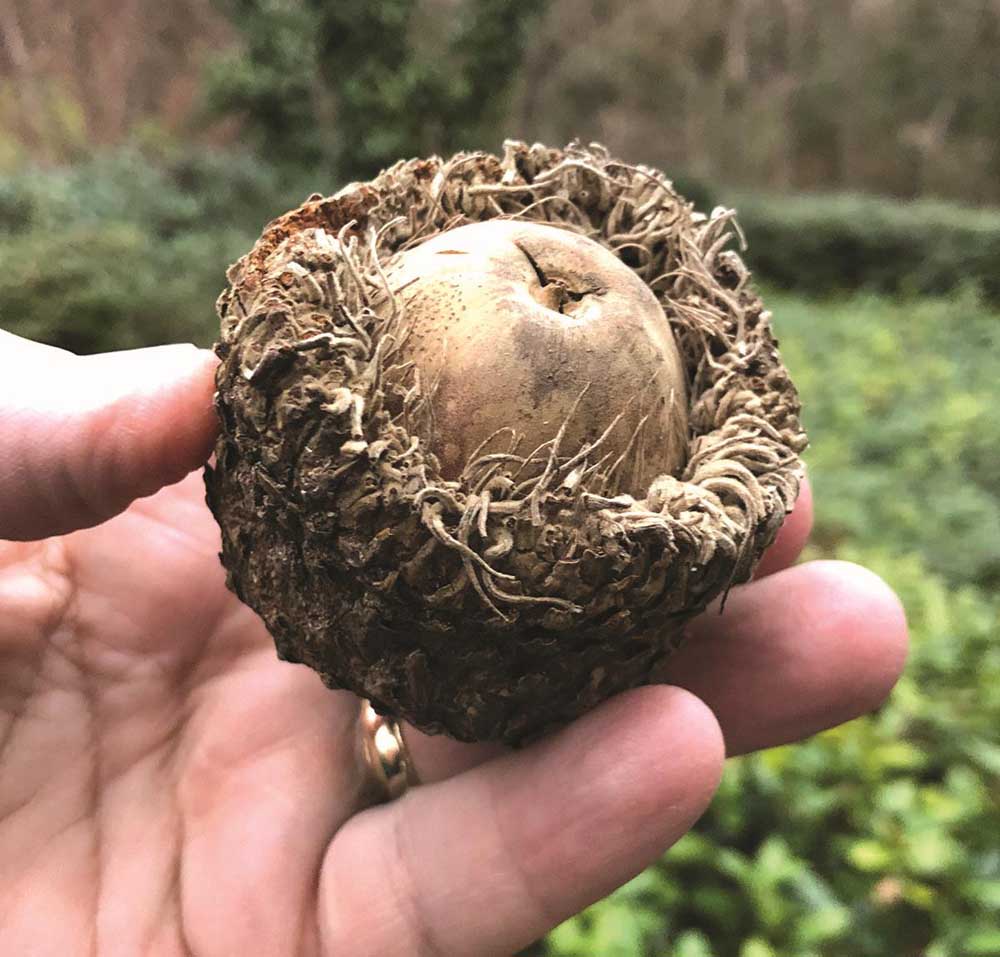Bur oak is a handsome tree with very large acorns
Published 1:35 am Thursday, January 17, 2019

- BUR OAKS produce some very large acorns, and the trees are well-suited to all of Texas.
Dear Neil: What type of oak has very large leaves and extremely large acorns (almost 2 inches tall — see photo)? The leaves have large, round edges. I found it growing along a stream bank in the Hill Country.
A: That sounds like bur oak, Quercus macrocarpa. It’s fairly common, as you discovered, along stream banks in the eastern half of the state. It’s winter-hardy to all of Texas and well-suited to all of the state. It’s a handsome tree.
GO WITH TAMU INFORMATION
Dear Neil: Our lawn care company told me they needed to apply a high-potash fertilizer long after the first freeze in late fall. They said roots remain active all winter. I saw a Texas A&M report saying that we should apply a high-nitrogen food earlier in the fall, weeks before the first freeze. Which is correct?
A: Unless a soil test shows your soil to be deficient in potassium (potash), there would be little or no benefit in adding it at any time, and many Texas soils already have enough. I’ve always supported the TAMU turf and soil specialists and their recommendations. Fact is, you can use the very same highnitrogen or all-nitrogen fertilizer containing a high percentage of slow-release nitrogen every time you feed almost all of your plants, especially if you garden with a clay soil.
TOO MUCH WATER
Dear Neil: I’ve attached a photo of my Christmas cactus. I’ve had it five years during which time it has done fairly well. This year it produced several flowers but the stems have all wilted and collapsed. What kind of soil does it need? How much water does it require?
A: Your plant looks like it received too much water rather than too little. In their native homes in tropical South America, Christmas cacti grow suspended in trees. They get started in collections of leaf debris along trees’ trunks. They receive their water from the frequent rainfall, but it also drains away quickly, so they need a very porous planting medium. When they are kept too wet for more than a few days, especially if they’re growing in heavy soil, they will shrivel and die overnight. Unfortunately, it doesn’t look good for your plant.
THESE CRAPES ARE NORMAL
Dear Neil: When the first cold spell came in December my two crape myrtles seemed to die. Other types of plants in our neighborhood have green buds now, but these plants are completely brown. Will they come back? Also, when should I prune them? I’d prefer not to prune the one in the backyard unless I have to.
A: Crape myrtles are subtropical deciduous plants. That means that they often hold their leaves into very late fall. Your crape myrtles are behaving like all other crape myrtles across Texas. They look absolutely normal. As for pruning, don’t ever “top” a crape myrtle for any purported reason. You’ll see others do so, but only because they don’t know better. It ruins their growth form forever and it does nothing to improve their blooming. Actually, quite the opposite — it delays the first and subsequent blooms. If you need to shape them a bit, the best time is midwinter (now).
CINDER BLOCKS ARE SAFE
Dear Neil: I’ve read several posts on the internet that cinder blocks are potentially harmful when used for raised vegetable gardens — that they contain chemicals we don’t want to have in our foods. Is that true?
A: It’s probably true that you read that on the internet, since one seems to be able to find almost anything on the internet these days.
However, cinder blocks of today are plain concrete and there should be nothing to worry about. If it’s a big concern to you, however, you could always lay a liner of polyethylene plastic on the inside of them and let the garden soil keep it in place. That also works with landscape timbers that have been treated with preservative.
DANDELION CONTROL
Dear Neil: I haven’t had good luck in controlling dandelions with my pre-emergent weedkillers as I have other types of broadleafed weeds. What type is best?
A: You want to use Gallery to prevent germination of broadleafed weeds, dandelions included. They are, however, perennials, so a certain percentage of your population of dandelions will be from plants returning from their roots. Use a broadleafed weedkiller spray containing 2,4-D. Time to apply Gallery is the last week of August or first week of September. Time to apply the 2,4-D product is mid-fall (late October into November. You can also apply it during warm spells of the winter.
Have a question you’d like Neil to consider? Mail it to him in care of this newspaper or email him at mailbag@sperrygardens.com. Neil regrets that he cannot reply to questions individually.






